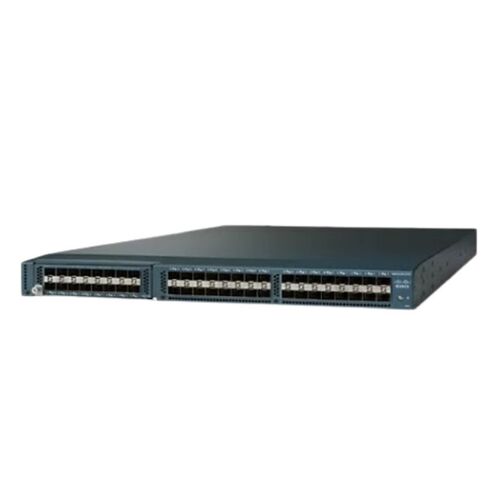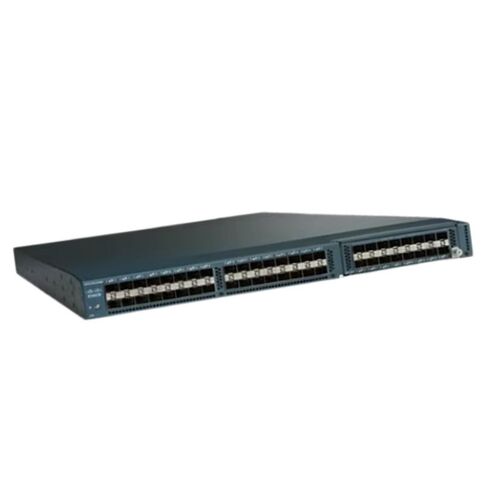UCS-FI-6248E16-28P Cisco Expansion Module (48 Ports)
- — Free Ground Shipping
- — Min. 6-month Replacement Warranty
- — Genuine/Authentic Products
- — Easy Return and Exchange
- — Different Payment Methods
- — Best Price
- — We Guarantee Price Matching
- — Tax-Exempt Facilities
- — 24/7 Live Chat, Phone Support
- — Visa, MasterCard, Discover, and Amex
- — JCB, Diners Club, UnionPay
- — PayPal, ACH/Bank Transfer (11% Off)
- — Apple Pay, Amazon Pay, Google Pay
- — Buy Now, Pay Later - Affirm, Afterpay
- — GOV/EDU/Institutions PO's Accepted
- — Invoices
- — Deliver Anywhere
- — Express Delivery in the USA and Worldwide
- — Ship to -APO -FPO
- — For USA - Free Ground Shipping
- — Worldwide - from $30
Overview of Cisco UCS 6248UP Fabric Interconnect
Manufacturer Details
- Manufacturer: Cisco Systems, Inc.
- Part Number: UCS-FI-6248E16-28P
- Brand: Cisco
Product Specifications
Device Type and Design
- Type: Managed Switch
- Port Configuration: 48 Ports
- Form Factor: Rack-Mountable 1U
Networking Capabilities
- Subtype: 10 Gigabit Ethernet
- Total Ports: 28 x 10 Gigabit / FCoE SFP+
- Performance Throughput: 960 Gbps
- MAC Address Table: 32,000 Entries
- Jumbo Frame Support: 9216 Bytes
Management and Features
Remote Management and Protocols
- Remote Management Protocol: RMON
Advanced Features
- Layer 2 Switching
- IGMP Snooping
- Data Center Bridging Exchange (DCBX) Support
- Quality of Service (QoS)
- Rapid Per-VLAN Spanning Tree Plus (PVRST+)
Compliance and Standards
- IEEE 802.3
- IEEE 802.1Q
- IEEE 802.1p
- IEEE 802.3ad (LACP)
- IEEE 802.1w
- IEEE 802.3ae
- IEEE 802.1s
Power Features
- Redundancy: Optional Power Redundancy
Ports
The Cisco UCS-FI-6248E16-28P Managed Expansion Module is equipped with an impressive 48 ports, making it a highly versatile and powerful networking solution. These ports play a crucial role in facilitating connectivity and data transfer within a network infrastructure. In this section, we will delve into the benefits and importance of this feature, highlighting its various aspects and capabilities.
Enhanced Connectivity
With 48 ports, the Cisco UCS-FI-6248E16-28P provides an extensive range of connectivity options. This allows businesses to effortlessly connect multiple devices, servers, and storage resources to the network. The high number of ports ensures that there is ample capacity to accommodate the growing needs of an organization.
Scalability
One of the key advantages of having 48 ports is the scalability it offers. As businesses expand and their network requirements evolve, the ability to add more devices and equipment becomes essential. The Cisco UCS-FI-6248E16-28P's generous number of ports allows for easy scalability, enabling organizations to seamlessly integrate new devices into their network without disrupting existing connections.
Flexibility
The 48 ports on the Cisco UCS-FI-6248E16-28P offer remarkable flexibility in terms of connection options. The module supports various types of Ethernet connections, including Gigabit Ethernet and 10 Gigabit Ethernet. This versatility allows businesses to choose the most suitable connectivity option based on their specific needs and requirements.
Reduced Network Congestion
With a larger number of ports available, network congestion can be significantly reduced. Each port provides a dedicated connection, ensuring that data flows smoothly without any bottlenecks or delays. This is particularly beneficial in high-demand environments where multiple devices are constantly accessing the network simultaneously.
Improved Performance
The 48 ports featured on the Cisco UCS-FI-6248E16-28P contribute to enhanced network performance in several ways.
Increased Bandwidth
Having 48 ports means there is an increased amount of available bandwidth for data transfer. This translates into faster and more efficient communication between devices within the network. Whether it's transferring large files, accessing shared resources, or running resource-intensive applications, the ample bandwidth provided by the module's ports ensures smooth and uninterrupted operations.
Load Balancing
The multiple ports on the Cisco UCS-FI-6248E16-28P allow for load balancing across the network. Load balancing ensures that network traffic is evenly distributed among different ports, preventing any single port from becoming overwhelmed. This optimizes resource utilization and enhances overall network performance by avoiding congestion and bottlenecks.
Redundancy and High Availability
Having a larger number of ports enables organizations to implement redundancy and high availability strategies. By connecting devices through multiple ports, organizations can create redundant paths within their network infrastructure. In the event of a port failure or network disruption, traffic can be automatically rerouted through alternate paths, ensuring uninterrupted connectivity and minimizing downtime.
Future-Proofing
Investing in a networking solution with 48 ports, such as the Cisco UCS-FI-6248E16-28P, helps future-proof an organization's infrastructure.
Room for Expansion
With the increasing reliance on technology and connectivity, businesses need to be prepared for future growth. The 48 ports provide ample room for expansion and accommodate additional devices and equipment as the organization expands its operations. This scalability eliminates the need for immediate hardware upgrades and saves businesses both time and money in the long run.
Support for Advanced Technologies
As new technologies emerge, having a network infrastructure with a larger number of ports ensures compatibility and support for these advancements. Whether it's the adoption of virtualization, cloud computing, or IoT devices, the Cisco UCS-FI-6248E16-28P's 48 ports offer the flexibility and capacity to seamlessly integrate these technologies into the network.
Conclusion
In summary, the Cisco UCS-FI-6248E16-28P Managed Expansion Module's 48 ports provide enhanced connectivity, scalability, flexibility, reduced network congestion, improved performance, and future-proofing capabilities. This feature is of utmost importance to users as it enables seamless integration of devices, accommodates expanding network requirements, and supports advanced technologies. By investing in a networking solution with 48 ports, organizations can ensure a robust and efficient network infrastructure that meets their current and future needs.











